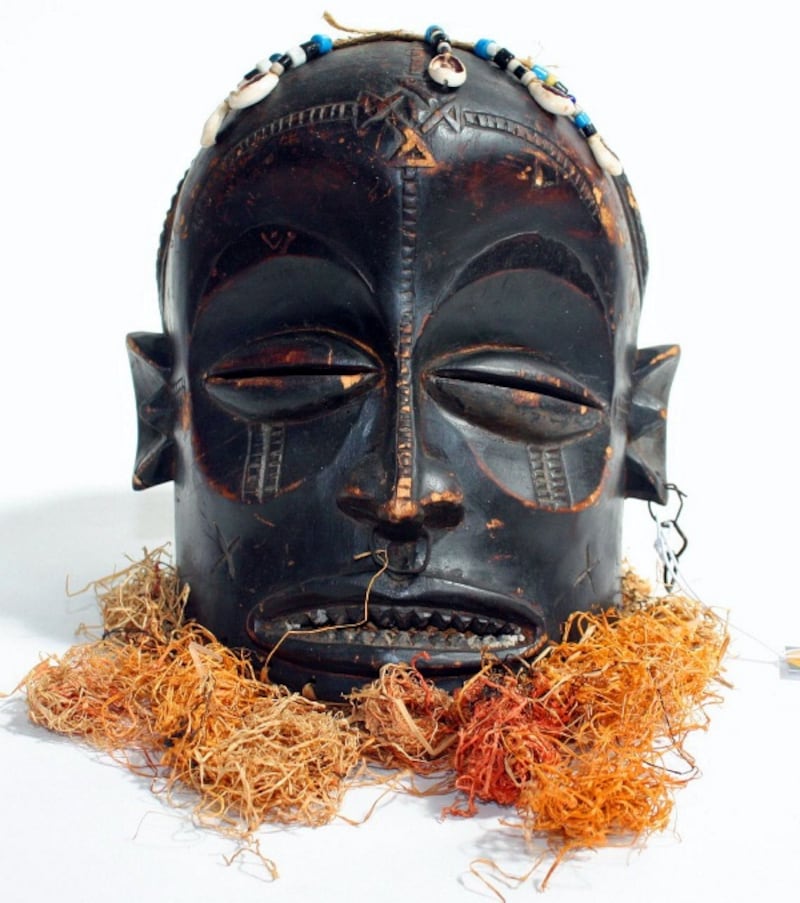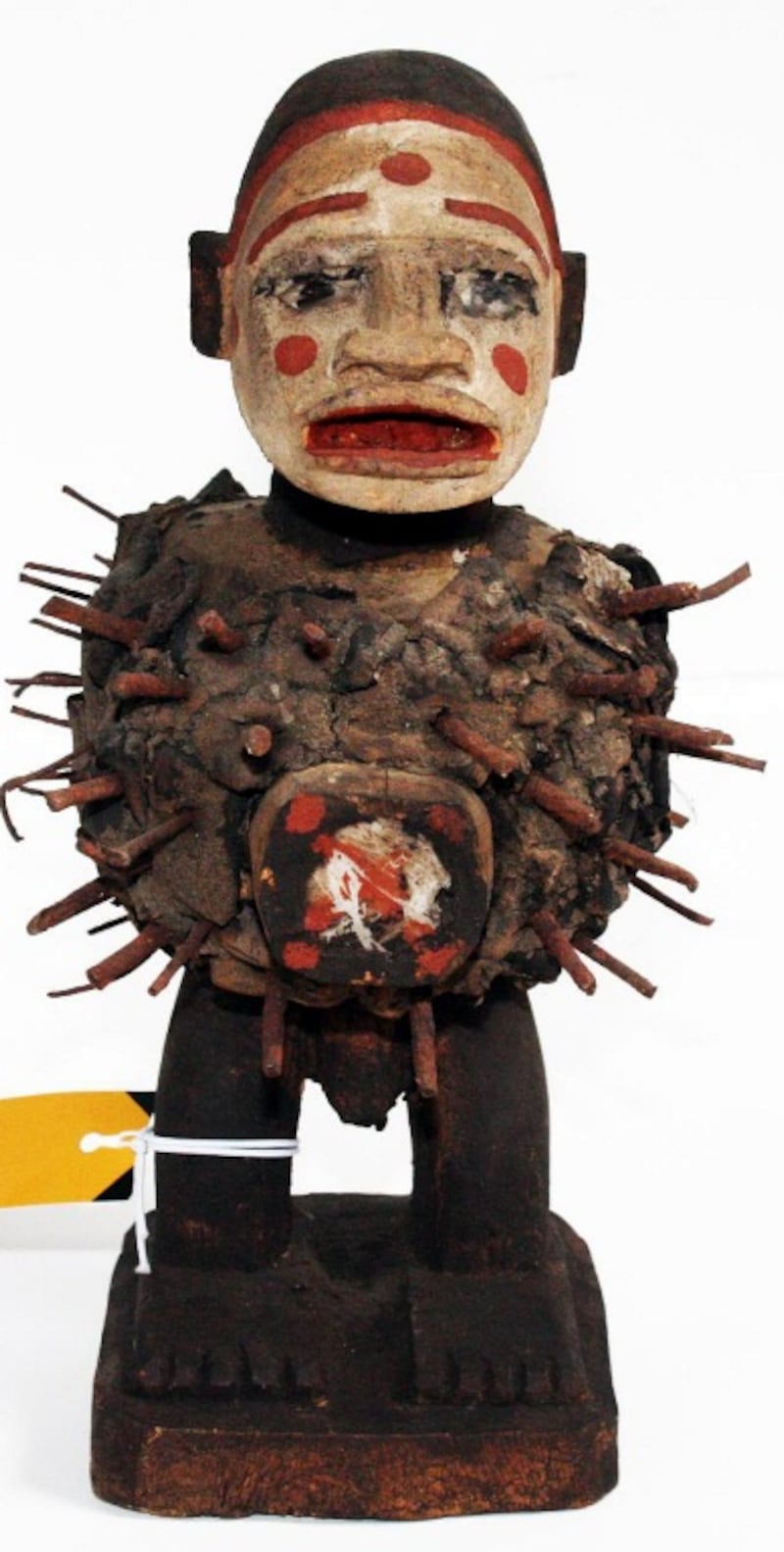Ireland’s largest private collection of African tribal art was among the diverse lots in this week’s two-day Summer Fine & Decorative Art Sale at Mealy’s. The auctioneers said the collection was consigned by a former British Army officer, Allen Denton-Miller, who retired to Ireland after years in Africa. He assembled the collection, of some 150 items, during a career which began in 1959 “in Dar es Salaam for a tour of duty with the King’s African Rifles”.

Auctioneer George Gerard Mealy said that his client, after 50 years of collecting, had “reached the age where dispersal makes more sense than acquisition and was now offering the collection for sale in the hope that it will provide as much enjoyment to others as it has to him”.
The items which went under the hammer included ceremonial masks, fertility symbols, funerary artefacts and “voodoo” dolls. These nail-studded human effigies (bottom right) were traditionally used by witch doctors to punish wrong-doers. The cloth-covered, carved wooden figures contain cavities for “storing human skin, hair and magical herbal ingredients”. The dolls, called “nail fetishes” by specialist collectors, while renowned in popular culture, are rarely seen in salerooms.
One especially striking example, pictured left, from what is now the Democratic Republic of Congo, sold for €310 (estimate €250-€500). Among other lots sold was “Cihongo helmet mask” (left)which made €400 (€500-€750) and a “Chokwe initiation bird mask” which made €800 (€1,000-€1,200).
African tribal art is rarely seen at auction in Ireland and is not widely collected in this country. The main international centre for this highly specialist sector of fine art and antiques collecting is Brussels – because of Belgium’s colonial past in the Congo. There is a large collection in the National Museum of Ireland, although many of the items are not on public display.

After the auction, Mealy’s said that “about half” of the collection had sold – mostly, as expected, to overseas bidders.
Overall, 70 per cent of more than 1,100 lots in the two-day auction were sold. The "sleeper" turned out to be an oil-on-copper panel painting of The Madonna and Child, with Three Saints and a Lion in an Interior by an unknown artist but described as "in the style of Domenico Guarino (1683-1750)". It sold to a French bidder for €7,600 – over seven times the top estimate (€700-€1,000).
A 19th-century Russian icon of the Mother and Child with Moscow silver marks made €1,300 (€500-€600). A 19th-century rosewood men’s vanity case, complete with ivory-handled cut-throat razor, and silver topped bottles and jars bearing the crest of the Montmorency family, made €1,000 (€800-€1,200).
An Irish George III bracket clock by Thomas Blundell, Dublin sold for €6,000 (€3,000-€5,000); and, a late-Georgian Irish door-lock and key €1,500 (€1,200- €1,500). See mealys.ie for more results












